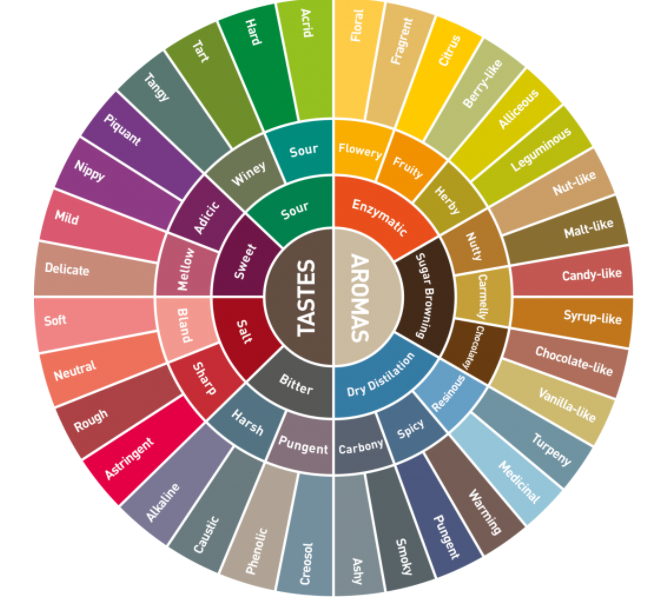
Taste and smell of foods
Why do some people have different reactions to the same food.
One person night love chocolate while another person may find it too sweet, some people love cheese but others think it is nasty. The reason for these differences is due in large part to the taste of food but there are other factors like the smell of food, its texture, its colour and its temperature also contribute to what is generally known as the #Flavour of food. The combination of all these factors tells us whether food is delicious, good, unpleasant or downright disgusting. The #Flavour of food is due mostly to how it tastes and smells when you eat, the most immediate sensation is Taste but you actually smell food as well. If you hold your nose while you eat, you will notice some food will taste different. There are five taste sensations ( Sweet, Bitter, Sour, Salty and Umami) only recognized as a taste in 1985. Umami is associated with #Savoury foods which includes meat and tomatoes. Smell is important if not more important than taste for instance when people who have a head cold try to taste salsa and chips , they feel the textural crunch hot peppers on their tongue but they can’t taste the flavour which is salsa with onions, tomatoes and peppers because they can’t smell it.
When we chew, aromas are released to activate our sense of smell by the way of special channel that connects the roof of the throat to the nose, if this channel is blocked such as when our nose are stuffed up by a cold or flu, odours can’t reach sensory cells in the nose that are stimulated by smell so we don’t enjoy foods. Without smell, foods tend to taste bland and have no flavour.
A huge amount of chemical compounds contribute to the flavour of food, chocolate for instance is a mixture of some 300 flavour compounds and coffee beans contain more than 800 chemicals. Identifying these chemicals can help create a variety of artificial flavours that are used in nearly every food product out these including potato chips, processed meat, cheese, ice cream, chewing gum and soft drinks.
Chemists create artificial flavours from chemical compounds present in plants and animals, they use them in their natural state or they process them to make a new flavors, what’s interesting is that we don’t need all the flavour compounds in a given food to re-create its flavour for instance an orange contains 250 flavour chemicals which all combine to create an orange flavour but artificially flavoured tang a powdered drink mix has only six aromatic chemicals in its make up but it has a similar orange like taste so we can get pretty close to proper orange flavours from just a few of flavour chemicals.
Artificial flavours get their characteristic odour from various compounds formed especially esters which are chemical compounds formed by the chemical reaction of an alcohol with a carboxylic acid.
Alcohol is an organic compound with the general formula R-OH, as R is a hydrocarbon group and –OH is a hydroxyl group.
a carboxylic acid is a compound with the general formula R-COOH , for example the formation of ethyl Hexanoate (fruity Pineapple, it forms part of the complex nature of maturity in cheese profile) is mainly prepared by hexanoic acid and ethanol using sulfuric acid as a catalyst , but wait a second, isn’t Ethanol the type of alcohol found in alcoholic beverages, that’s true, but when it combines with acid, it loses the characteristics of drinking alcohol, likewise acetic acid is the main component of Vinegar, yet when it reacts with an Alcohol, the flavour changes dramatically.
When two compounds react to form a new compound, the properties of the new compound are not simple of those original ones, they are completely different. If you use different alcohols and different acids, you obtain different flavours, you can compare that to combining two colours of paint, when you combine red and yellow, you get orange, similarly when you combine pentanol with acetic acid, you get pentyl acetate (one of the important esters).
Flavour Chemists combine many chemicals to achieve a desired set, day by day they test different combinations before settling on the one that will achieve the desired result.
At a major food company, you have to work as apprentice chemist for at least seven years before even getting a peek at the flavour formulas behind the world’s most popular foods.
Flavour Wikipedia





Always creative 👏👏and it is very useful thanks for sharing this
Plant & R&D Manger - Hassani group of company
2yvery useful information